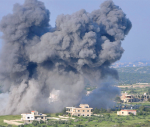You are here
‘Seizing the momentum’
Mar 30,2015 - Last updated at Mar 30,2015
We are entering the fifth year of crisis in Syria, with no end in sight.
Instability is threatening neighbouring countries and indeed the whole region.
A political solution that could put an end to this unprecedented crisis remains on a distant horizon.
Thus far, the crisis has profoundly scarred the lives of more than 12 million people.
Houses have been destroyed, hospitals and schools wiped out, and jobs and livelihoods lost.
Data on Syria shows that development has been rolled back by four decades; poverty now prevails among 75 per cent of the population: 4.4 million live in extreme poverty. And the economic and social situation in neighbouring countries is deteriorating every day.
The conflict has caused the largest population displacement in recent times: 3.8 million people fled to countries neighbouring Syria, increasing pressure on host communities, on national service delivery systems and on social relations, beyond the carrying capacity of those countries.
Traditional approaches challenged
As the crisis continues, it not only challenges traditional conflict-resolution approaches and humanitarian responses, but also standard aid response mechanisms.
The crisis has gone beyond the typical humanitarian scope of providing food, shelter and basic services to internally displaced and refugee groups. It now includes a complex set of security and development issues.
With close to 8 million internally displaced, and with 85 per cent of refugees in Syria’s neighbouring countries living amongst the poorest and most vulnerable host communities, competition for jobs, housing, land, water and other basics is fuelling tension between local populations and refugees, with potentially devastating consequences for all concerned.
The international community can help communities inside Syria by expanding the scope of response to support livelihoods and basic service delivery to the most vulnerable.
It can also show greater solidarity with neighbouring countries by helping protect and preserve their stability, bolster their economies, upgrade their infrastructure and enhance their public services to meet the needs of their own populations as well as the needy they are generously hosting.
Strategic shift in response
In this challenging context, and working with affected countries, the international community launched last December in Berlin, a new generation of response plans to address the Syrian crisis in its broadest and deepest of contours: the Syria Strategic Response Plan (SRP) and the Regional Refugee and Resilience Plan (3RP), under the joint leadership of the Office of Coordination of Humanitarian Affairs, High Commissioner for Refugees and United Nations Development Programme.
Together, the plans bridge traditional humanitarian-refugee-development divides, representing the strategic shift that is required for a comprehensive and robust response, not only inside Syria but covering the entire area affected by the crisis — a global first.
The SRP appeals for $2.9 billion to provide essential humanitarian support to over 12 million people. If fully supported, the SRP can contribute to greater stability within parts of Syria and may significantly reduce continuing outflows of refugees.
The 3RP marks an innovation in how the international community can respond to urgent humanitarian needs while laying the foundation for a more sustainable, resilient, comprehensive and cost-effective development solution — a promising shift in approach.
It is a country-driven process, detailing nationally owned and led plans, and drawing on over 200 partners across the region.
The 3RP asks for $5.5 billion to address the impact of the crisis on those countries, of which one-third is for support to resilience and development.
The State of Kuwait has agreed to generously host the third International Pledging Conference for Syria, on March 31, 2015, to help finance the largest-ever UN crisis appeal.
The new comprehensive response calls upon all stakeholders offering support through Kuwait III to revisit the modalities of their assistance, convening their humanitarian, development, security and foreign affairs offices, as well as civil society and the private sector, to advance the resilience agenda for the benefit of all.
With the aim of overcoming the humanitarian-development divide, the 3RP, for example, has reached significant levels of integration of humanitarian and development planning.
This resilience-building integration will succeed only if donors follow the same shift and significantly harmonise — if not integrate — their humanitarian and development allocations.
As a result of this new model, combined use of development and humanitarian resources to support the priorities in appeals will require an improvement of existing aid arrangements and aid flows at country level.
Building on national response plans, the establishment of reliable financial tracking and reporting systems will improve donor coordination and budget allocations.
In 2014, all UN appeals received just over 50 per cent of the requested funding.
The need for aid has increased much faster and continues to outpace donor contributions.
In the context of dwindling international humanitarian aid, the populations in crisis zones need us to break down financing silos, and leverage all bilateral and multilateral financing options in the pursuit of peace and security.
We have come a long way since the last financial appeal. Let us make 2015 a year of significant change in the Syria crisis, on multiple fronts.
Kuwait III will be an important opportunity. Let us seize the momentum.
The writer is United Nations assistant secretary general and regional director of the Arab States Bureau of the United Nations Development Programme. She contributed this article to The Jordan Times.












